- Home
- Quizzes
- My Quiz Activity
- Newsletters
- Sports Betting
- MY FAVORITES
- Add Sports/Teams
- SPORTS
-
NFL
- NFL Home
- Arizona Cardinals
- Atlanta Falcons
- Baltimore Ravens
- Buffalo Bills
- Carolina Panthers
- Chicago Bears
- Cincinnati Bengals
- Cleveland Browns
- Dallas Cowboys
- Denver Broncos
- Detroit Lions
- Green Bay Packers
- Houston Texans
- Indianapolis Colts
- Jacksonville Jaguars
- Kansas City Chiefs
- Las Vegas Raiders
- Los Angeles Chargers
- Los Angeles Rams
- Miami Dolphins
- Minnesota Vikings
- New England Patriots
- New Orleans Saints
- New York Jets
- New York Giants
- Philadelphia Eagles
- Pittsburgh Steelers
- San Francisco 49ers
- Seattle Seahawks
- Tampa Bay Buccaneers
- Tennessee Titans
- Washington Commanders
-
MLB
- MLB Home
- Arizona Diamondbacks
- Atlanta Braves
- Baltimore Orioles
- Boston Red Sox
- Chicago White Sox
- Chicago Cubs
- Cincinnati Reds
- Cleveland Guardians
- Colorado Rockies
- Detroit Tigers
- Houston Astros
- Kansas City Royals
- Los Angeles Angels
- Los Angeles Dodgers
- Miami Marlins
- Milwaukee Brewers
- Minnesota Twins
- New York Yankees
- New York Mets
- Oakland Athletics
- Philadelphia Phillies
- Pittsburgh Pirates
- San Diego Padres
- San Francisco Giants
- Seattle Mariners
- St. Louis Cardinals
- Tampa Bay Rays
- Texas Rangers
- Toronto Blue Jays
- Washington Nationals
-
NBA
- NBA Home
- Atlanta Hawks
- Boston Celtics
- Brooklyn Nets
- Charlotte Hornets
- Chicago Bulls
- Cleveland Cavaliers
- Dallas Mavericks
- Denver Nuggets
- Detroit Pistons
- Golden State Warriors
- Houston Rockets
- Indiana Pacers
- Los Angeles Clippers
- Los Angeles Lakers
- Memphis Grizzlies
- Miami Heat
- Milwaukee Bucks
- Minnesota Timberwolves
- New Orleans Pelicans
- New York Knicks
- Oklahoma City Thunder
- Orlando Magic
- Philadelphia 76ers
- Phoenix Suns
- Portland Trail Blazers
- Sacramento Kings
- San Antonio Spurs
- Toronto Raptors
- Utah Jazz
- Washington Wizards
-
NHL
- NHL Home
- Anaheim Ducks
- Arizona Coyotes
- Boston Bruins
- Buffalo Sabres
- Calgary Flames
- Carolina Hurricanes
- Chicago Blackhawks
- Colorado Avalanche
- Columbus Blue Jackets
- Dallas Stars
- Detroit Red Wings
- Edmonton Oilers
- Florida Panthers
- Los Angeles Kings
- Minnesota Wild
- Montreal Canadiens
- Nashville Predators
- New Jersey Devils
- New York Islanders
- New York Rangers
- Ottawa Senators
- Philadelphia Flyers
- Pittsburgh Penguins
- San Jose Sharks
- Seattle Kraken
- St. Louis Blues
- Tampa Bay Lightning
- Toronto Maple Leafs
- Vancouver Canucks
- Vegas Golden Knights
- Washington Capitals
- Winnipeg Jets
- NCAAF
- NCAAM
- Boxing
- Entertainment
- Lifestyle
- Golf
- MMA
- Soccer
- Tennis
- Wrestling
- More Sports
- RESOURCES
- My Account
- YB on Facebook
- YB on Twitter
- YB on Flipboard
- Contact Us
- Privacy Policy
- Terms of Service
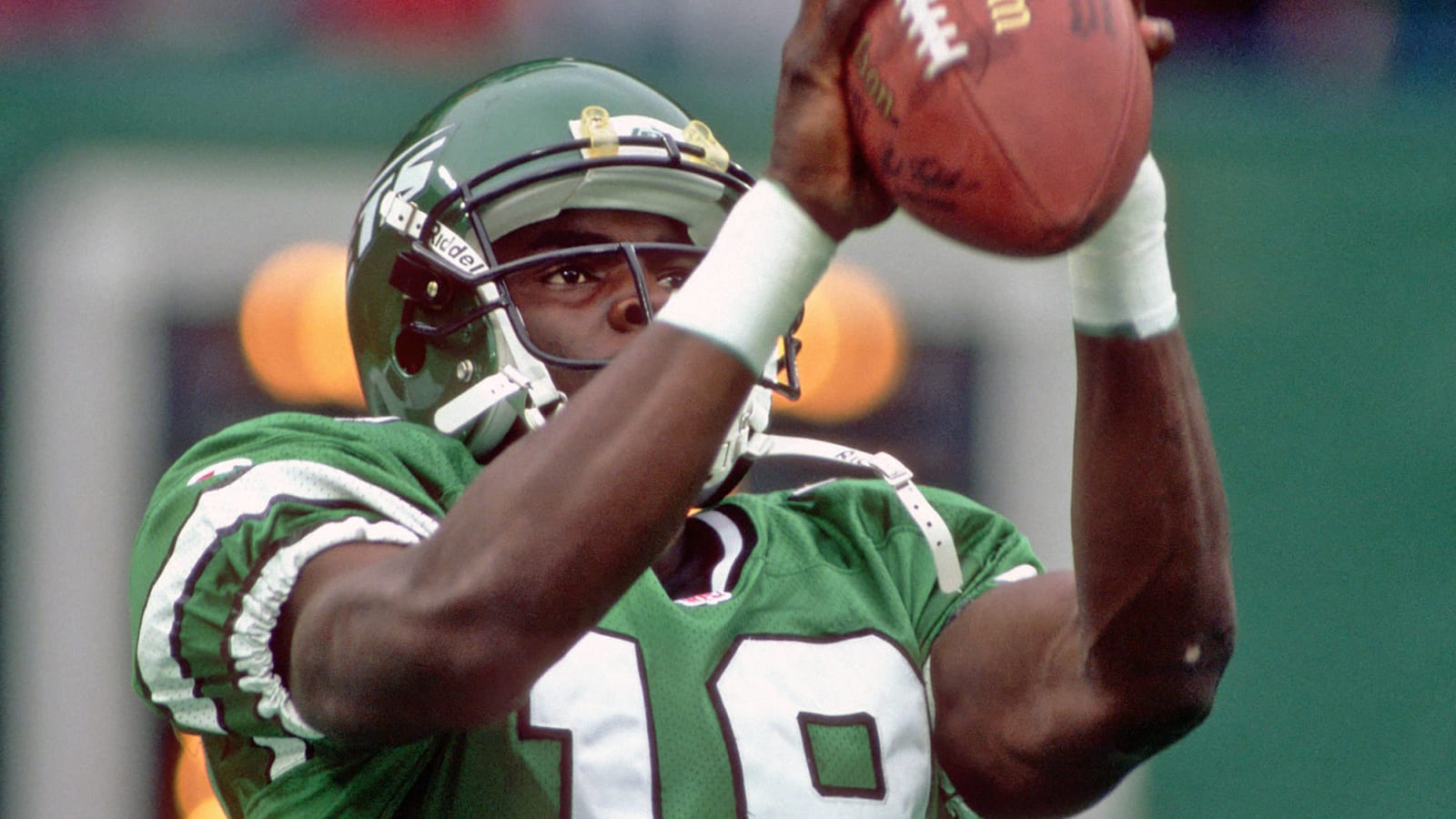
Looking back at the 1996 NFL Draft
Every NFL draft has some drama. Stars are born on that day, and everyone is trying to find that big sleeper and avoid selecting a bust. And we have Mel Kiper Jr. on hand to tell us who did it right and who doesn't know what the draft is for.
The '96 draft was different but produced a few of the greatest players to ever play their positions. A new franchise hit the jackpot during the draft, while another organization drafted one of the biggest busts in draft history and followed it up by immediately trading away a future Hall of Famer.
Keyshawn Johnson goes No. 1
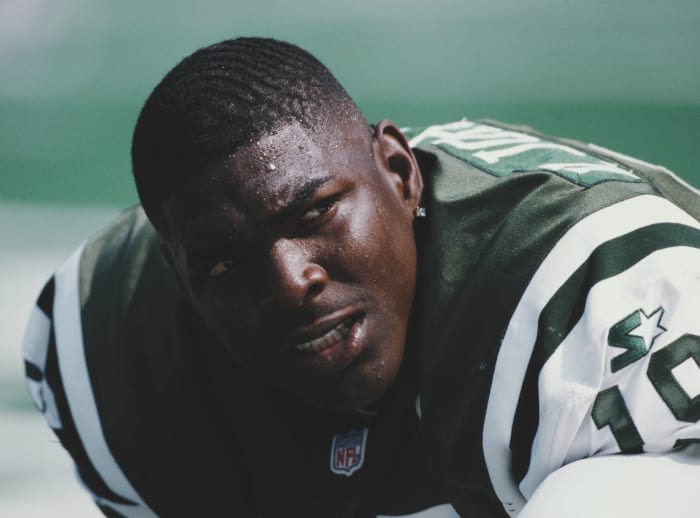
USC's Keyshawn Johnson was the top overall pick in the 1996 Draft, becoming the first wide receiver to go number one overall since the Patriots took Nebraska's Irving Fryer in 1984. It would also be the last time a receiver was picked with the top selection. Johnson's rookie season didn't go well as the Jets went 1-15 and held the NFL's worst record for the second straight year. His experiences during his rookie season would be turned into the book, Just Give Me The Damn Ball. Keyshawn would go on to play in three Pro Bowls and won Super Bowl XXXVII with the Tampa Bay Buccaneers.
Ozzie Newsome nails Ravens' first ever draft

The NFL's "newest" franchise in 1996 was the Baltimore Ravens. Though the entire organization left Cleveland for Baltimore, the NFL kept the Browns' history for a new Cleveland franchise (they even fired their coach, a guy named Bill Belichick). The Ravens had two first-round picks in their initial draft and made history by becoming the only franchise to draft two Hall of Famers in the first round. With the 4th overall pick, GM Ozzie Newsome selected UCLA tackle, Jonathan Ogden. Ogden would be selected to 11 Pro Bowls during his 12 NFL seasons and is regarded as one of the best offensive tackles to ever play the game.
Speaking of greatest to ever play the game, with the 26th pick in the first round, Newsome drafted linebacker Ray Lewis from Miami. Lewis is one of the best linebackers ever, going to 13 Pro Bowls, winning two Super Bowls, a Super Bowl MVP award, and was a leader for one of the greatest defenses in league history.
Five Hall of Famers selected

Jonathan Ogden and Ray Lewis weren't the only Hall of Famers that heard their name on draft night. Marvin Harrison, Brian Dawkins, and Terrell Owens also found their way to Canton. Harrison went 19th overall to the Colts, and he would be paired with 1998 overall No. 1 pick Peyton Manning to form one of the best quarterback-receiver duos in NFL history. Dawkins was selected with the final pick of the second round and would earn nine Pro Bowl bids with the Eagles and Broncos. The 49ers selected Chattanooga's Terrell Owens in the third round (89th overall). T.O. would finish his career -- which is known more for the drama that surrounded him -- third in receiving yards and touchdowns
Adam Vinatieri went undrafted
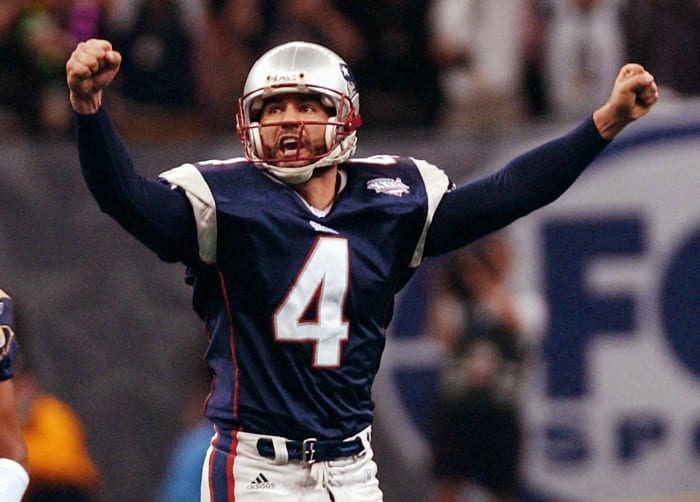
Another sure-fire Hall of Famer from the class of '96 is kicker Adam Vinatieri. Vinatieri, who played college at South Dakota State, wasn't drafted but signed as a free agent by the New England Patriots. There he would play for ten seasons, winning three Super Bowls and coming through with some of the most clutch kicks in NFL history. He would win another Super Bowl with the Colts and would retire as the league's all-time leading scorer in both the regular season and postseason. At his retirement at the age of 48, he was the third-oldest player in league history.
Lawrence Phillips' troubled life
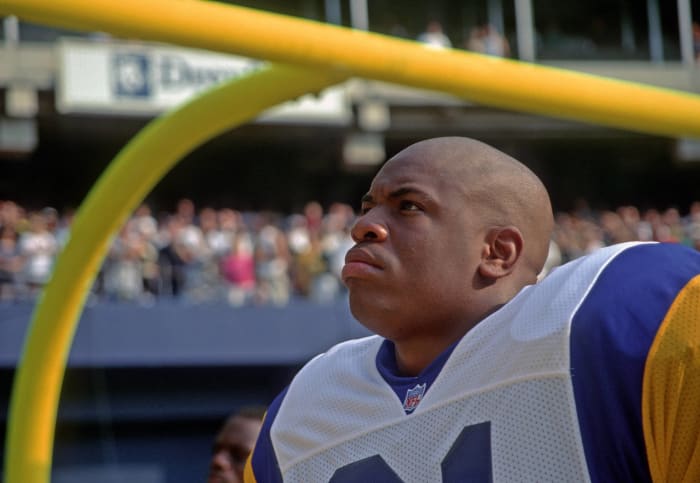
Phillips was an extraordinary talent at Nebraska but had a lot of off-field and character issues that worried a lot of NFL teams. It didn't worry the St. Louis Rams, who used the sixth overall pick in the 1996 draft to select Phillips, despite the running back position not being a pressing need for St. Louis (more on that in a bit). In his 25 games as a Ram, Phillips performed (1,265 yards, 12 TDs), but had issues on and off the field that led to the team suddenly releasing him mid-season. The Dolphins and 49ers gave him a chance, but work ethic, substance abuse issues, and run-ins with coaches and the law forced him out of the league.
Phillips would be sentenced to 31 years in prison due to various assaults and theft offenses. While in his prison, he would be charged with the murder of his cellmate, Damion Soward. A few months later, Phillips would be found in his cell hanged to death with a "Do Not Resuscitate" note on his chest.
Jerome Bettis traded to the Steelers

Once the Rams drafted Lawrence Phillips with the No. 6 pick, they traded their current starting running back ... Jerome Bettis ... to the Pittsburgh Steelers in one of the worst draft day trades in history. Bettis had rushed for 2,454 yards and 10 touchdowns in his first two seasons with the Los Angeles Rams and was named the NFL Offensive Rookie of the Year in 1993, but by 1995, Bettis didn't fit into the style of offense the Rams (who moved to St. Louis) wanted to run. The Steelers gave up a second-round and fourth-round pick in the 1997 Draft for Bettis and a third-round pick in 1996. He would rush for over 1,000 yards in his first six seasons with the Steelers and scored 78 touchdowns during his time in Pittsburgh. The final game of his career was a Super Bowl XL win over the Seahawks in 2006 and would be elected to the Pro Football Hall of Fame.
In Bettis' first season with the Steelers, he rushed for 1,431 yards. Phillips would rush for 1,453 yards for his entire NFL career.
Mel Kiper and Joe Theismann get into it
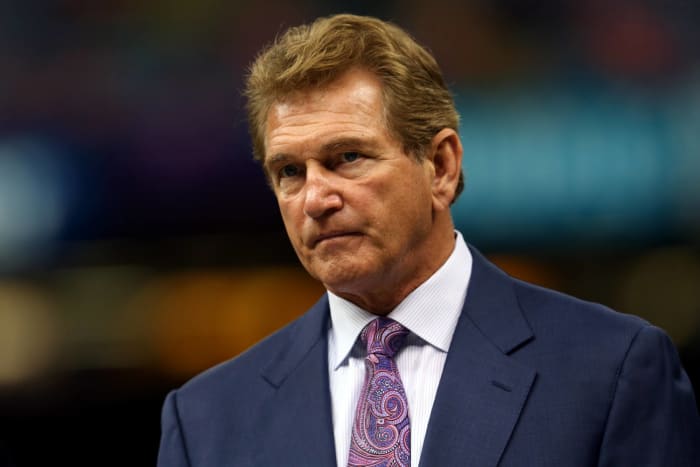
ESPN's draft coverage featured Chris Berman as host and Mel Kiper Jr. and Joe Theismann as analysts. One of the clear disagreements that Kiper and Theismann had was over the Rams selecting Lawrence Phillips with the No. 6 pick. Theismann spent the entire show up to that point defending Phillips and projecting him to be a special player in the NFL. Mel was turned off by his off-field behavior and felt that the Rams (who were openly trying to find a way to trade up to draft Phillips) had bigger needs than running back and better players were on the board. After the pick was made, the two argued how much Phillips' red flags would affect his pro career. This wasn't as biting as some of these two other beefs, but it was very lively during what can be a drawn-out telecast.
Mel closes out the discussion by saying, "In three years, we'll look back and see what's happened". Well, three years later and it was clear that Theismann was wrong.
Houston Oilers draft a Heisman winner that ended the jinx
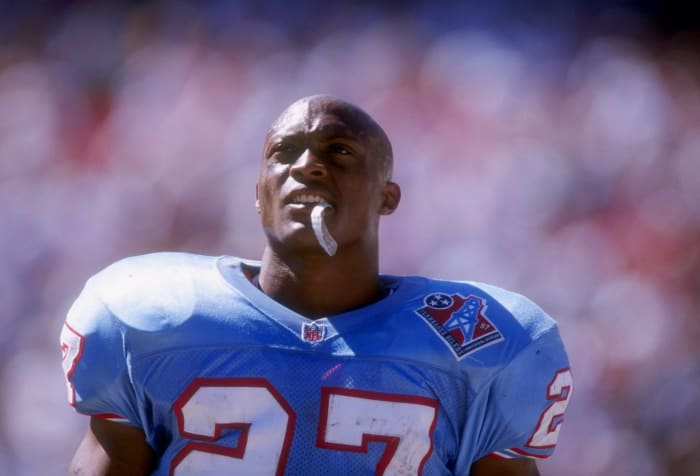
From 1989 to 1994, the Heisman Trophy winner didn't exactly tear up the NFL. After 1988 Heisman winner Barry Sanders was drafted in 1989, six consecutive winners -- Andre Ware, Ty Detmer, Desmond Howard, Gino Toretta, Charlie Ward, and Rashaan Salaam -- failed to make a significant dent in their NFL careers (Howard would win a Super Bowl MVP while Ward went undrafted). That streak ended when the Houston Oilers drafted Ohio State running back Eddie George with the 14th overall selection.
George started 128 consecutive games for the Oilers/Titans (only Walter Payton started more consecutive games at running back), rushing for 10,441 yards and 68 touchdowns in his career (he also caught 10 TD passes). He became the foundation for a franchise that was going through a major -- and lengthy -- transition. George's rookie year was with the Houston Oilers. The next season, they played in Memphis as the Tennessee Oilers. The following year, the Oilers played in Nashville's Vanderbilt Stadium before finally settling into their new stadium in Nashville as the Tennessee Titans.
Leeland McElroy waited ... and waited ... and waited
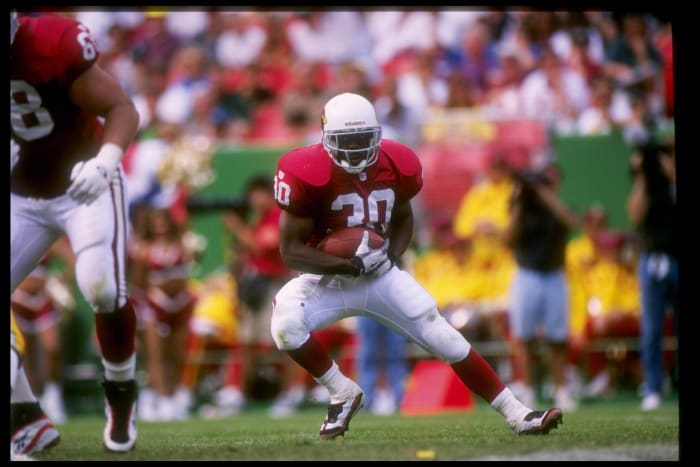
Running back Leeland McElroy left Texas A&M after his junior season where he rushed for 1,122 yards and totaled 16 touchdowns on the year. McElroy attended the draft in person as he was projected to be a first-round draft pick. However, injury concerns scared some teams and he spent draft night waiting in the green room. The entire first round went by and McElroy still hadn't been selected, marking one of the longest waits for a player in attendance. Not much longer, the Arizona Cardinals used the 32nd overall pick (which was a second-round pick back then) on McElroy.
There was good reason he kept getting passed over. McElroy's career would last just two seasons, rushing for just 729 yards and 3 touchdowns. The Cardinals would release him after the 1997 season, and after being cut in training camp by the Buccaneers prior to the 1998 season, he wouldn't play in the NFL again.
His draft story served as a warning for future players who were looking to be at the draft waiting for their name to be called.
Joe Horn's (and his son's) path to the draft

After not being academically eligible to attend South Carolina, Joe Horn played two seasons at Itawamba Community College, where he caught just 54 passes for 878 yards in his career. Unable to be eligible for a Division I spot when his JUCO career ended, he went back to his hometown of Fayetteville, NC where he worked fast food and factory jobs for a couple of years. He would submit a workout tape to professional football teams across North America and would eventually get picked up by the CFL's Memphis Mad Dogs. After a successful season, Horn would be selected by the Chiefs in the 5th round of the 1996 draft and spent four years as a backup receiver.
In 2000, his career soared when he signed with the Saints. He would become one of the top receivers in the league, earning four Pro Bowl selections, and was one of the leaders of the franchise and community after Hurricane Katrina decimated the city. His cell phone celebration in 2003 was a tipping point in the debate over touchdown celebrations.
Horn is relevant in this year's draft as well. His son, South Carolina cornerback Jaycee Horn, will likely be a first-round pick in the 2021 draft.
One of the worst quarterback classes ever
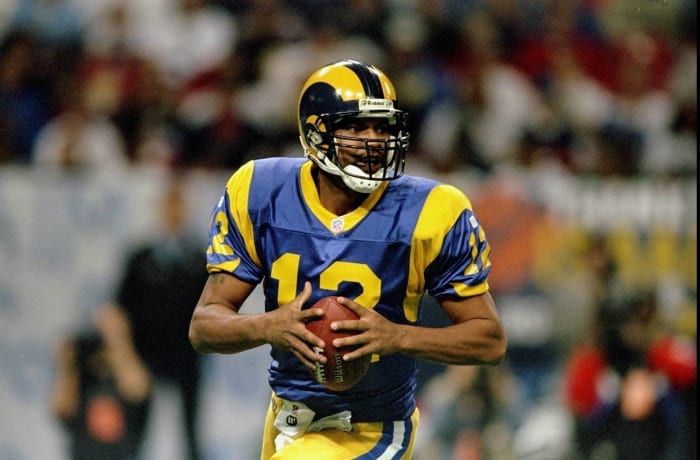
The 2021 NFL Draft could see four quarterbacks selected with the first four picks, and it is near certainty that a QB will be the top overall pick for the sixth time in the last seven drafts. In the 1996 draft, no quarterback was picked in the first round -- the last time that has happened. Michigan State's Tony Banks was the first QB off the board, going to the Rams with the 42nd overall pick. Ohio State's Bobby Hoying would be picked by the Eagles in the 3rd round. Northern Arizona's Jeff Lewis (Broncos) and Florida State's Danny Kanell (Giants), would go in the 4th round while Duke's Spence Fisher (Steelers) and James Madison's Mike Cawley (Colts) went in the 6th. The final signal-callers to be selected were Trinity International's Jon Stark (Ravens) and USC's Kyle Wachholtz (Packers) in the 7th round.
Fisher, Cawley, Stark, and Wachholtz would never throw an NFL pass. Lewis threw just 54 passes in his career. Banks was by far the most successful QB in this draft class (15,315 yds, 77 TDs). However, the most successful quarterback wasn't drafted at all. Central Washington's Jon Kitna would go on to a 17-year NFL career, where he started 124 games (playing in 141 total) and passing for 29,745 yards and 169 touchdowns.
But one of the better wide receiver classes

1996 had a nice crop of pass-catchers. We've touched on Keyshawn Johnson, Marvin Harrison, Terrell Owens, and Joe Horn, but there were several more solid wideouts that came from that draft. Terry Glenn, Eric Moulds, Muhsin Muhammad, Amani Toomer, and Eddie Kennison had productive NFL careers with each of them catching over 500 passes.
There was also Alex Van Dyke, the Nevada receiver who was picked with the first pick in the second round by the Jets. The pick was soundly booed by Jets fans in attendance since they already used their first pick on a receiver. Van Dyke would only catch 26 passes in his career.
Linebackers were pretty good, too

Ray Lewis is one of the best linebackers to have ever played the game. Zach Thomas made seven Pro Bowl appearances during his career. Tedy Bruschi won three Super Bowl titles with the Patriots. Kevin Hardy, Donnie Edwards, Randall Godfrey, and John Mobley had very successful careers as well.
Late round diamonds

Every draft has those late-round sleepers who turn out to be long-time players in the league. The most notable late-round pick in the 1996 draft was the Dolphins' Zach Thomas. The 154th overall pick (5th round) would play 12 seasons for Miami before his final season in Dallas. The linebacker from Texas Tech was named to the 2000s all-decade team and was the 1996 AFC's Defensive Rookie of the Year.
Stephen Davis would be one of the top backs for Washington and the Panthers. Jon Runyan was a long-time starting tackle for the Oilers and Eagles. Jermaine Lewis' kickoff return for a touchdown effectively ended Super Bowl XXXV and giving the Ravens (again, what a draft by Baltimore) their first championship. La'Roi Glover, Marco Rivera, Fred Miller, and Orpheus Roye also played for a long time in the league.
49ers draft twins in the same round
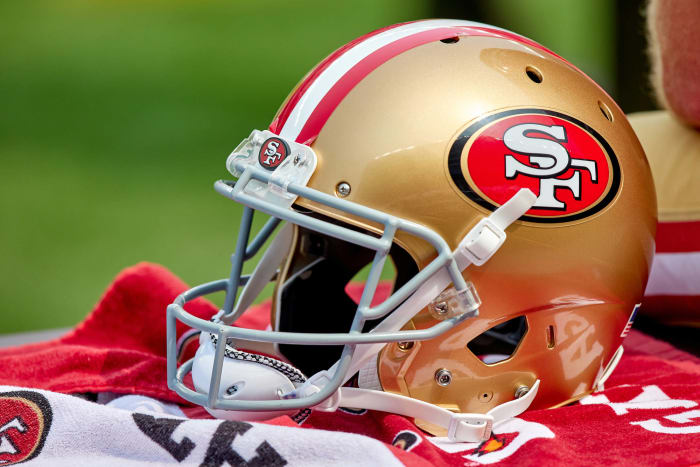
Sometimes there is the feeling that teams aren't taking the late rounds of the draft very seriously. Prospects drafted in the 7th round have a long shot to make the team, so organizations are more apt to take a flyer on a guy in an attempt to find the biggest diamond in the rough.
The 49ers did that in the 7th round of the 1996 draft ... twice! With the 239th overall pick (30th pick in that round), San Francisco drafted tight end, Sean Manuel, from New Mexico State. Fifteen picks later, the Niners selected Sam Manuel, a linebacker from New Mexico State. Due to him being the final pick in the draft, Sam became the latest person to become Mr. Irrelevant. Sean and Sam are twins and became the first set of brothers to be drafted by the same team in the same draft.
Sean would play 11 games for the Niners in 1996, catching three passes. Sam was cut before the season began.
The NFL was changing
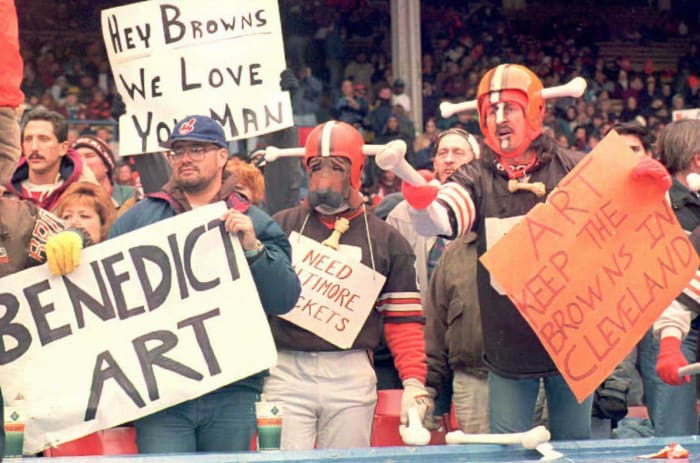
The NFL in 1996 was a league that was going through a lot of changes, especially among its membership. The Carolina Panthers and Jacksonville Jaguars just completed their inaugural seasons and were looking to build in the draft (Carolina drafted four running backs that year). The Rams and Raiders played their first seasons in St. Louis and Oakland, respectively, after both left Los Angeles. The Ravens were a new franchise after Art Modell moved his Cleveland Browns to Baltimore and leaving the team's records and history behind. The 1996 season would also be the last for the Houston Oilers, who would move to Tennessee the following season.
Unbeknownst at the time, but the NFL would also have a changing of the guard. For the last eight seasons, the 49ers or Cowboys played in the NFC championship all but once. Also, every NFC championship game had either the 49ers, Cowboys, Redskins, or Rams playing up to that point. In the 25 years since only 8 times had one of those teams played in the NFC title game ... and the Cowboys and Washington (now Washington Commanders) haven't advanced that far.
On the flip side, the New England Patriots had played in only one AFC championship game in the first 26 years of the event. In the 25 years since they've been in 14 title games and reached 10 Super Bowls.
There was also a change in media. In 1994, FOX began broadcasting the NFC games ... knocking CBS out of football for the first time in 38 years. CBS would get back in by out-bidding NBC for the rights to AFC games in 1998.
Longtime Dolphins head coach Don Shula retired after the 1995 season and was replaced with Jimmy Johnson. Johnson had previously replaced Tom Landry, who was a longtime head coach for the Cowboys.
More must-reads:
- Winners and losers from Day 2 of the 2024 NFL Draft
- Eagles move up in draft to select another DB
- The '100 catches in an NFL season' quiz
Breaking News
Customize Your Newsletter
 +
+
Get the latest news and rumors, customized to your favorite sports and teams. Emailed daily. Always free!
Use of this website (including any and all parts and
components) constitutes your acceptance of these
Terms of Service and Privacy Policy.

